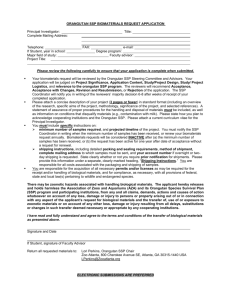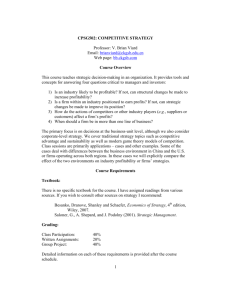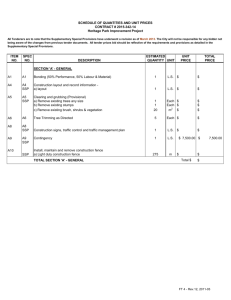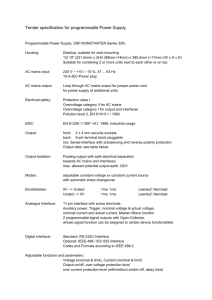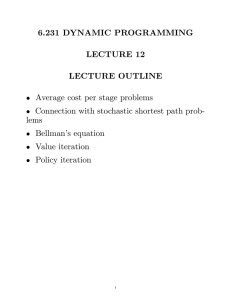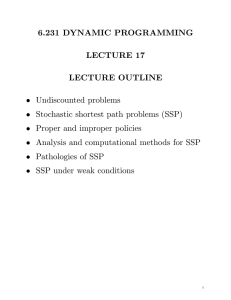Effective solution method of the subset sum
advertisement
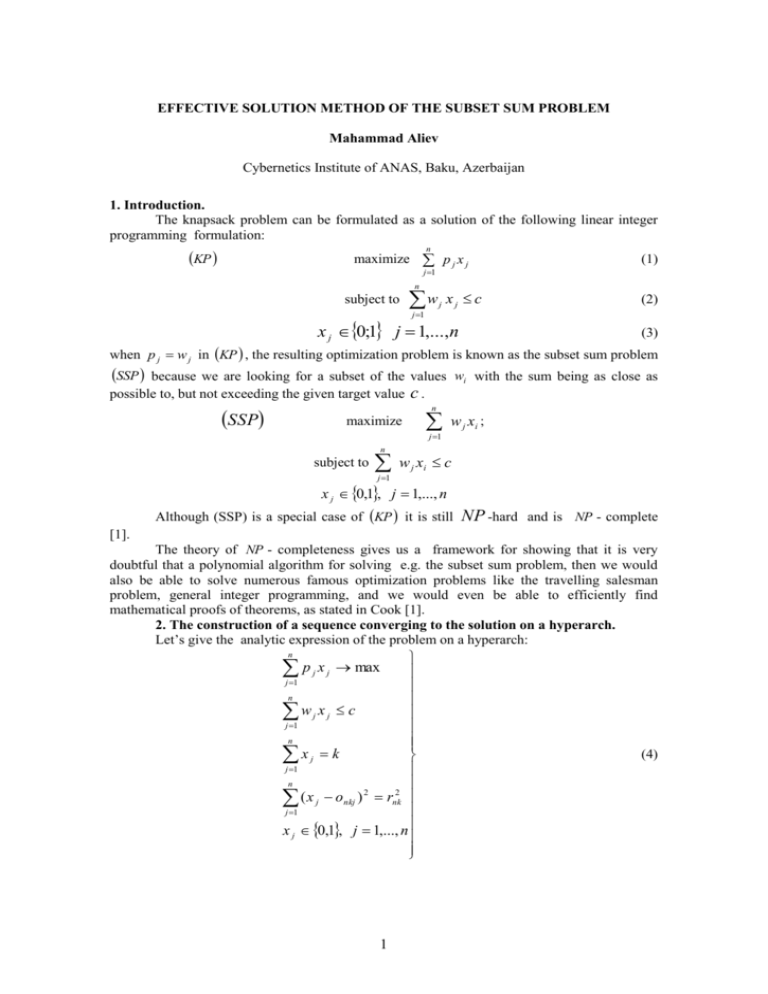
EFFECTIVE SOLUTION METHOD OF THE SUBSET SUM PROBLEM Mahammad Aliev Cybernetics Institute of ANAS, Baku, Azerbaijan 1. Introduction. The knapsack problem can be formulated as a solution of the following linear integer programming formulation: KP n maximize p j x j (1) j 1 n subject to w j 1 j xj c x j 0;1 j 1,...,n (2) (3) when p j w j in KP , the resulting optimization problem is known as the subset sum problem SSP because we are looking for a subset of the values wi with the sum being as close as possible to, but not exceeding the given target value c . SSP n maximize j 1 n subject to j 1 w j xi ; w j xi c x j 0,1, j 1,..., n Although (SSP) is a special case of KP it is still NP -hard and is NP - complete [1]. The theory of NP - completeness gives us a framework for showing that it is very doubtful that a polynomial algorithm for solving e.g. the subset sum problem, then we would also be able to solve numerous famous optimization problems like the travelling salesman problem, general integer programming, and we would even be able to efficiently find mathematical proofs of theorems, as stated in Cook [1]. 2. The construction of a sequence converging to the solution on a hyperarch. Let’s give the analytic expression of the problem on a hyperarch: j 1 n wj x j c j 1 n x k j j 1 n 2 2 ( x o ) r j nkj nk j 1 x j 0,1, j 1,..., n n p j x j max 1 (4) Assume that the point X 1 (n, k ) is determined by the existence criterium and is located on the hyperarch K nk [2]. We use this point and construct a sequence converging to the solution of problem (4). The terms of the sequence should satisfy the constraint and give strong monotonically increasing values to the functional. 1) Monotonity condition: take the first of the coordinates equal zero of the point X 1 (n, k ) and compare it with the corresponding coordinates of the point X 1 (n, k ) taking unit values pi and p j . pi p j 0 . Were x1 j 1; x1i 0 2) Constraint satisfaction condition. Let’s give constraint satisfaction condition for the indices and j i n satisfying the monotonity condition. We calculate the difference d c w j x1 j ; j 1 d w j wi 0 is the constraint satisfaction condition. pi p j 0 (5) d w j wi 0 If condition (5) is satisfied, we accept x1 j 0; x1i 1 . The point X 2 ( n, k ) found in such a way increases the functional and satisfies the constraint and is located on K nk . We continue this process until the relation (5) is not satisfied between the indices i and j. We conduct the process k 1, n 1 for all K nk to k 1, n 1 find the points X q*( n, k ) compare the values that they give to the functional and find the solution of problem KP Z * max P, X q* (n, k ) ; k 1, n ; P p1 , p 2 ,..., p n is object vector. k The method given above gives more effective results for (SSP). Of exactly solved problems for (SSP) the taken examples is better than the results obtain for (KP) problems. Example: W 41,7,6,35,45,51,71,81,12,13,42,26,37,45,59,60,70,80,87,90,92,127,150,35,18,17, 60,64,63,77,66,27,21,83,70,77,140,141,38,39,5,23,29,35,47,49,57,68,77,83) 1225 1500 2000 2500 2700 ci Exact solution 1225 1500 2000 2500 2700 Obtained result 1225 1500 2000 2500 2700 3. Investigation of difficulty order of the alqorithm. To understand difficulty order we must consider the cycles contained in each other in the alqorithm: j 1, n ; i 1, n ; kk 1, n ; k 1, n 1 ; The maximal number of embedded cycles is four. Hence we proved polynomial property of the method and that its difficulty order are O n4 . 4. Results: In this work we obtained following results. 1. A method for reducing the solution of any linear integer programming problem to its solution on a hyperarch is given. 2. Absence of condition (5) between the coefficients p i , p j and w j , wi is necessary condition for the point to be an optimal solution on the K nk . 2 3. The solution algorithm is polynomial. 4. The algorithm for (SSP) practically obtained only exact solution. References 1. Hans Kellerer, Ulrich Pferschy, David Pisinger Knapsack Problems. Spinger-Verlag Berlin. Hidelberg 2004 525 p. 2. Aliyev M.M. One approach to the solution of the knapsack problem//Reports NAS of Azerb., 2006, №3, p.32-39. 3

